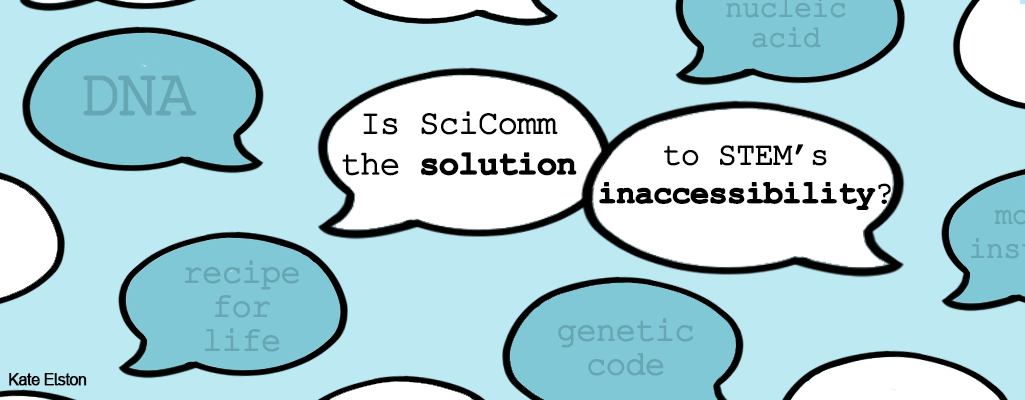Science communication is the buzzword of the decade. In this age of hyper-communication and information sharing, there have been increasing efforts by the scientific community to disseminate what we learn to the larger public. Article upon article has been written about how important the role of “science communicator” is—how essential it is for the betterment of the public’s scientific literacy. In 2016, the EU made a large push to make all science open access through the funding program Horizon 2020, now Horizon Europe. In a video series for the program, Director at Minerva Communications, Rhonda Smith, stated that “scientists have an obligation to communicate what they’re doing” because the larger public funds the research we do through their tax dollars. Science in general has a PR problem. We’re seen as aloof, elitist, isolated in our labs and behind unaffordable paywalls. Would making all science legible to the public fix that? Should we all be required to participate in science communication?
It is true we need better communication within the sciences. Academic writing is notoriously inaccessible. This complexity signifies ingroup status and serves to exclude those with less training and access to education. It may not be intentional, but the “opaque” writing style of academia is a tradition passed down to new undergraduate and graduate students year after year. To read scientific papers requires a fluency of the language, and most are left to navigate these spaces without much guidance. Those who fail to decipher the code get left behind.
…science’s accessibility problem is ultimately not that the public can’t parse our writing—it’s that scientists cannot read each other’s writing.
With every scientist writing this way, each new paper published only adds to the defensive power of the academic gatekeeping machine, which is demonstrated in a study published in eLife showing that scientific papers have become more and more difficult to read. It’s not enough to excuse this kind of writing as “specialists writing for specialists.” Journalists, patients, even politicians find themselves reading scientific papers, and when it is incomprehensible, journalists cannot inform the public, patients are left unable to advocate for themselves, and our policymakers—well, you know…. All this to say, it is in our interest to improve access to scientific findings.
However, increasing access to scientific findings and science communication are not the same things. What a researcher aims to communicate is vastly different than what a science communicator aims to do. The job entails much more than just being a scientist who has taken a public speaking class. The role of a science communicator is twofold—1. To communicate scientific concepts to non-experts in simplified terms, and 2. To curate information and findings as it is relevant to the general public.
Per the first point, as researchers, there is some merit in being able to simplify your area of expertise. However, there is this idea that if a researcher cannot explain their research in simple terms, they don’t know the material well enough. Perhaps this isn’t a pervasive idea, but it is one that crops up every so often to undermine those that have trouble putting their thoughts into words. What this idea fails to take into account is that communication is a skill that must be taught, trained and honed; while communicating is certainly an aspect of PhD training, it isn’t necessarily a focus.
This brings us to the second role of a science communicator—curation. In the museum of scientific knowledge, the science communicator sifts through mountains of specimen to find the right one to display for the public. In the EU’s call for Open Science, they reason that because our labs are funded with the public’s tax dollars, they are essentially shareholders that can shape what research is worth funding versus what isn’t. We are already in many ways beholden to what the public deems interesting or urgent, but this is a flaw in our system. More often than not, the projects that get left to the wayside are ones that would ultimately serve the most marginalized. It took the Ebola virus entering the US before the public deemed it worthy of attention, all while researchers and doctors in the most affected areas had been asking for funding for years. We see this pattern repeating today as the news reports on cases of Monkeypox that have entered our borders. Seeing the general public as “shareholders” of science would only amplify the biases we already see within scientific research.
Beyond that, curating topics for science communication also involves deciding what to omit. Not all research lends itself to simplification, and not all research is relevant to what the public wants to know. But that research is still essential even if its results cannot be “sold” to lay people. Expecting all science to be explainable or interesting for the public would be a great way to limit research to only what can be explained or is interesting.The EU’s goal of increasing public trust and interest in the sciences is not only commendable but absolutely necessary. Better access to science might increase interest in the STEM fields and improve scientific literacy. But science’s accessibility problem is ultimately not that the public can’t parse our writing—it’s that scientists cannot read each other’s writing. That’s not a problem science communication can solve.

Leave a Reply